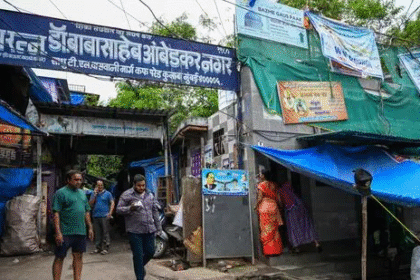Sunrise Over Visakhapatnam – A Symbolic Setting for a Global Message
As dawn broke over the coast of Visakhapatnam on June 21, 2025, the city’s serene beaches were transformed into a sprawling mosaic of yoga mats, saffron flags, and enthusiastic participants—marking the commencement of the 11th International Yoga Day. But this year’s observance bore a deeper resonance. For the first time, Prime Minister Narendra Modi chose the eastern seaboard city as the ceremonial host site, infusing the event with maritime symbolism, spiritual gravity, and a renewed call for global mindfulness.
Standing against the backdrop of the Bay of Bengal, with rhythmic waves echoing ancient chants, Modi addressed the world not as a politician—but as a practitioner, a teacher, and a messenger of universal stillness. In his opening remarks, he described yoga as “humanity’s pause button”, urging billions across the globe to use the ancient Indian practice not just for health, but for reflection, recalibration, and inner stability in an increasingly chaotic world.
The Evolution of International Yoga Day – From Resolution to Revolution
The journey of International Yoga Day, from a historic United Nations General Assembly resolution in December 2014 to a worldwide phenomenon by 2025, reflects not just the globalization of yoga, but India’s enduring civilizational influence.
PM Modi’s original proposal in the UN gained unprecedented support—177 co-sponsoring nations, a record at the time—and since then, June 21 has become a global event celebrated across cities from New York to Nairobi, from Tokyo to Tehran.
The 2025 edition, however, stands apart for several reasons:
- It coincides with the post-pandemic mental health recalibration that has made wellness, breathwork, and resilience mainstream conversations.
- The event comes amid escalating global conflicts, making the symbolic “pause” through yoga an international imperative rather than a cultural invitation.
- It reflects the growing integration of yogic science into healthcare, education, and climate activism, beyond its traditional associations with exercise or spirituality.
Visakhapatnam as a Spiritual and Strategic Choice
Choosing Visakhapatnam for the flagship celebration was not merely geographic—it was symbolic.
- Culturally, the city sits at the crossroads of Vedic, Buddhist, and Dravidian traditions, making it a melting pot of spiritual lineages.
- Strategically, it’s home to the Eastern Naval Command, and by situating yoga on a coastline heavily monitored for defense, the message was clear: true strength comes from inner stability.
- Environmentally, the coastal cleanup drive that preceded the event demonstrated yoga’s synergy with climate consciousness—a growing theme in India’s diplomatic and ecological messaging.
PM Modi’s team confirmed that the selection was intended to represent “India’s eastern gateway to global peace.”
The Global Choreography – Unity in Breath Across 190 Nations
At exactly 6:30 AM IST, Prime Minister Modi, surrounded by spiritual leaders, yoga instructors, and young students, began the standardized Common Yoga Protocol—a 45-minute sequence curated by India’s Ministry of AYUSH.
Simultaneously, across 190 countries:
- The Empire State Building lit up in saffron and green.
- Schools in Brazil, Fiji, and Kenya hosted yoga demonstrations.
- Indian embassies from Stockholm to Santiago live-streamed coordinated events with diplomats, expats, and yoga enthusiasts.
This year’s innovation was the “Surya Digital Spiral”, a global time-lapse visualization mapping the flow of sun salutations in real time across time zones—an artistic and symbolic depiction of unity in diversity.
Humanity’s Pause Button” – Breaking Down the Phrase
When PM Modi coined the phrase “Yoga is humanity’s pause button,” it wasn’t a rhetorical flourish—it was a philosophical indictment of modern hyper-productivity and spiritual detachment.
The phrase resonated across newsrooms and think tanks for several reasons:
- Pause, as a verb, signifies intentional stillness—a revolutionary act in a world addicted to speed.
- The ‘humanity’ modifier universalized the message beyond India, calling for a collective breath.
- The ‘button’ analogy signified agency—that peace is not passive; it’s activated.
Modi elaborated further in his speech:
Youth, Technology, and the Yoga Renaissance
A defining feature of Yoga Day 2025 was its digital embrace. While traditionalists often critique modern yoga’s commercial appropriation, this year showed how technology could amplify authenticity.
Highlights included:
- A Global Student Yogathon, with over 10 million students across 78 countries participating through VR-led classes.
- The launch of “YogaVerse”, India’s immersive metaverse-based wellness experience.
- Integration of real-time biometrics via wearables for tracking breath, alignment, and stress levels during asanas.
At the core of these innovations was a single purpose: making yoga inclusive, evidence-based, and scalable.
Domestic Participation – Beyond the Elites
From rural Madhya Pradesh to tribal belts in Jharkhand, Yoga Day 2025 reached corners of India often untouched by global campaigns. The “Yoga for All” rural initiative, in collaboration with ASHA workers and Panchayats, saw participation from over 1.2 crore villagers, many engaging in yoga for the first time.
Special focus was placed on:
- Women-led sessions in conflict-affected zones.
- Yoga programs in district jails and de-addiction centers.
- Special protocols for people with disabilities (PwDs), crafted with the Ministry of Social Justice.
This grassroots mobilization transformed Yoga Day from a headline into a nationwide movement for psychological healing.
Long before yoga became a wellness trend or a tool for lifestyle marketing, it was a deeply rooted act of introspective rebellion against the outer chaos of existence. Ancient Indian yogic texts, from the Bhagavad Gita to Patanjali’s Yoga Sutras, consistently emphasized detachment, clarity, and inner agency—values that are acutely relevant in today’s fragmented global order.
When PM Modi invoked the idea of yoga as a “pause button,” he subtly restored yoga’s original function as a counter-force to reactionary behavior—a tool for choosing calm over compulsion, vision over volatility. In this sense, yoga is not escapism. It is active withdrawal from noise, in order to act with greater clarity.
His speech made several scriptural references:
- The Gita’s “Yogastha kuru karmani”—Establish yourself in yoga, then act.
- Patanjali’s “Yogah chitta-vritti nirodhah” —Yoga is the cessation of the fluctuations of the mind.
- The Upanishadic principle of “Pratyahara”—withdrawal of the senses as preparation for true knowledge.
By highlighting these in a modern political address, Modi reclaimed yoga from fitness fads and relocated it within India’s metaphysical heritage, giving global audiences a window into the discipline’s depth.
Chapter 9: Yoga’s Global Medical Endorsement – From Tradition to Treatment
While the spiritual foundations were well established, what made International Yoga Day 2025 unique was the unprecedented support from the global medical and scientific community. Over the last decade, yoga has transitioned from a cultural export to a clinically validated therapeutic tool, particularly in the domains of:
- Mental health (depression, anxiety, trauma recovery)
- Cardiovascular health (hypertension, heart rate variability)
- Neurological rehabilitation (post-stroke recovery, Parkinson’s disease)
- Workplace resilience and burnout prevention
In a joint statement issued on June 21, 2025, leading institutions such as the World Health Organization (WHO), Harvard School of Public Health, and All India Institute of Medical Sciences (AIIMS) emphasized:
“Yoga is no longer an alternative. It is an integrative pillar of global preventive healthcare.”
In fact, WHO has now included Pranayama and basic asana flows in its digital public health guides under “Resilience Tools for Conflict-Affected Populations.”
Chapter 10: Yoga as Global Soft Power – India’s Silent Diplomacy
PM Modi’s assertion that yoga is “India’s gift to the world” has long been a part of India’s soft power strategy. But 2025 proved that this gift now comes with a global obligation to lead.
India’s yoga diplomacy has evolved from symbolic posturing to policy-backed partnerships, with key examples including:
- Bilateral MoUs with 52 countries for integrating yoga into national healthcare curricula.
- Funding over 200 AYUSH-trained yoga instructors to work full-time in embassies and cultural centers worldwide.
- Establishing the Global Yoga Accreditation Board (GYAB), ensuring standardization and authenticity in yoga instruction globally.
What was once a cultural assertion is now a policy instrument of transnational wellness governance, designed and driven by India.
Chapter 11: Global Reactions – Political Leaders, Spiritual Icons, and Civil Society
From UN headquarters to rural communities in Africa, world leaders and influencers engaged with Yoga Day 2025 in thoughtful and visible ways.
Highlights included:
- New Zealand Prime Minister Aria Thompson leading a sunrise yoga session at Mount Cook, calling yoga “the most diplomatic thing India has ever given the world.”
- Pope Francis, in a Vatican address, acknowledged yoga as “a discipline that connects intention with embodiment—an act of peace.”
- Tibetan spiritual leader the Dalai Lama, in a video message from Dharamshala, emphasized the meditative essence of yoga as “not Indian or Buddhist or Hindu, but universal.”
Even controversial geopolitical adversaries found a moment of synchronicity. Iranian and Israeli citizens posted photos of simultaneous yoga events—perhaps the only parallel moment of peace in an otherwise war-struck month.
Chapter 12: India’s Political Narrative and Modi’s Leadership Style
PM Modi’s leadership has always leveraged symbolism as strategy. Whether it was the tricolor mask during the pandemic, the “Vishwaguru” narrative in foreign policy, or now, the spiritual re-centering via yoga, he has skillfully merged Indian identity with global aspirations.
Critics call it cultural nationalism. Supporters call it civilizational diplomacy. But what cannot be denied is that Modi’s invocation of yoga as a “pause” for all of humanity works across ideological divides. Even in polarized global politics, breath, stillness, and awareness are difficult to politicize.
His speech in Visakhapatnam ended with a poetic invocation:
“When the mind is still, the world can heal. Let us stop—not to withdraw, but to rise better.”
It was a call to pause not as surrender, but as strategy.
Chapter 13: Youth and Yoga – Generational Reclaiming
The most hopeful aspect of Yoga Day 2025 was its resonance with the youth. A practice once seen as ancient, slow, and rural was now being reclaimed by Gen Z and Gen Alpha as an act of rebellion against burnout culture.
India’s Ministry of Education introduced a National Youth Yoga Championship, drawing over 10 lakh participants from over 2,000 schools. A new breed of influencers—called “Yogipreneurs”—shared their journey from anxiety to awareness using yoga, reaching millions on Instagram and YouTube.
Students from IITs and IIMs took to yoga not just for fitness, but for:
- Focus in high-performance environments
- Managing screen fatigue
- Reducing reliance on medication for performance anxiety
Yoga, once marginalized as ‘slow’ or ‘old-fashioned’, is now an act of conscious rebellion against speed and superficiality.
Chapter 14: The Corporate Awakening – Yoga in the Boardroom
2025 also marked a tipping point in how global businesses approached wellness. As work culture shifted from “always on” to “consciously off,” yoga became the anchor of corporate well-being strategies.
- Tata Consultancy Services (TCS) mandated 10-minute yoga breaks before board meetings.
- Amazon India introduced mandatory “conscious pauses” every 90 minutes via guided breathwork sessions.
- Global law firm Clifford Chance rolled out a “Pause to Lead” program based on Indian yogic frameworks, integrating asanas, meditative check-ins, and workplace compassion
- PM Modi’s speech was circulated across corporate HR teams, especially the line
Also Read : Israel-Iran War LIVE: 7+ New Strikes Exchanged as Israel Claims Nuclear Delay of 2–3 Years for Tehran








